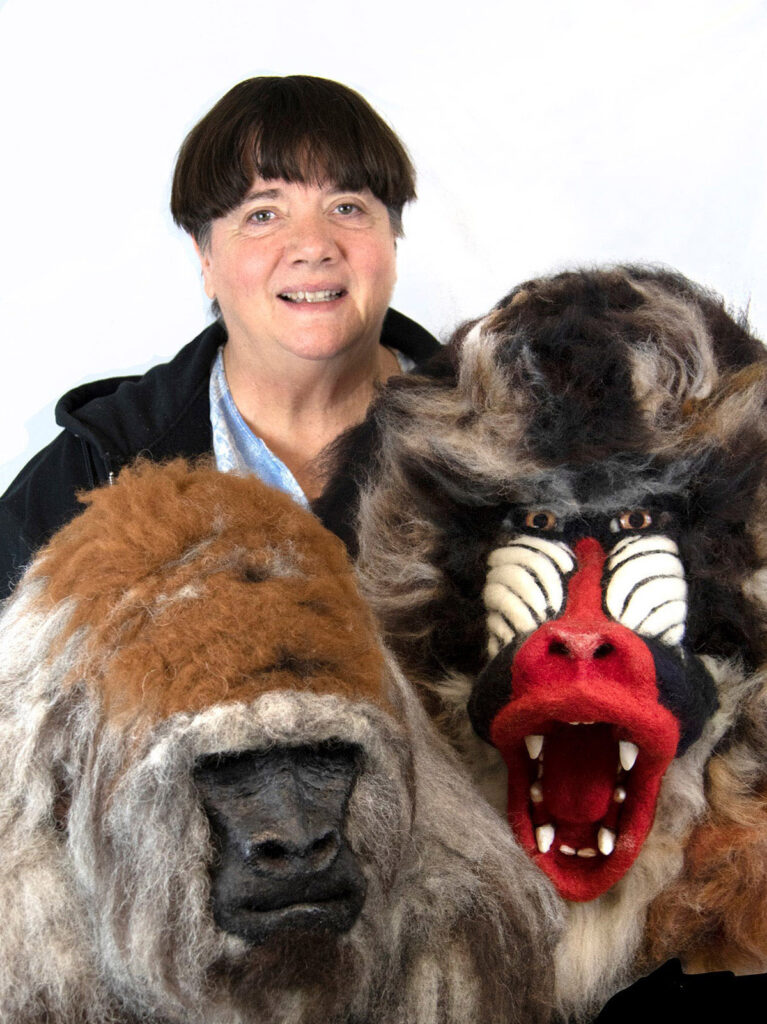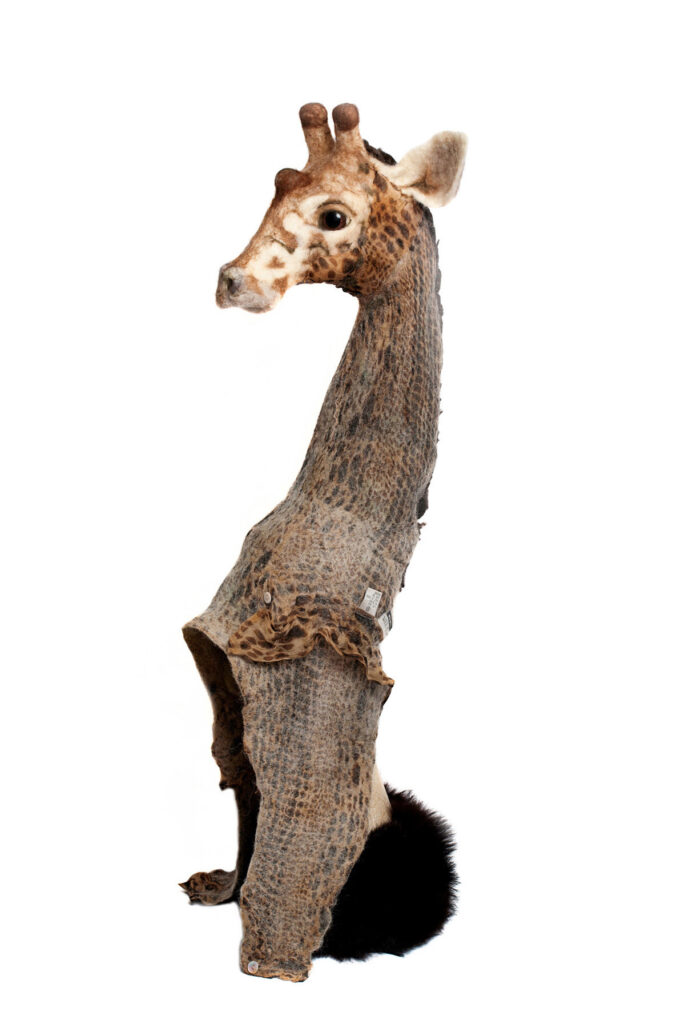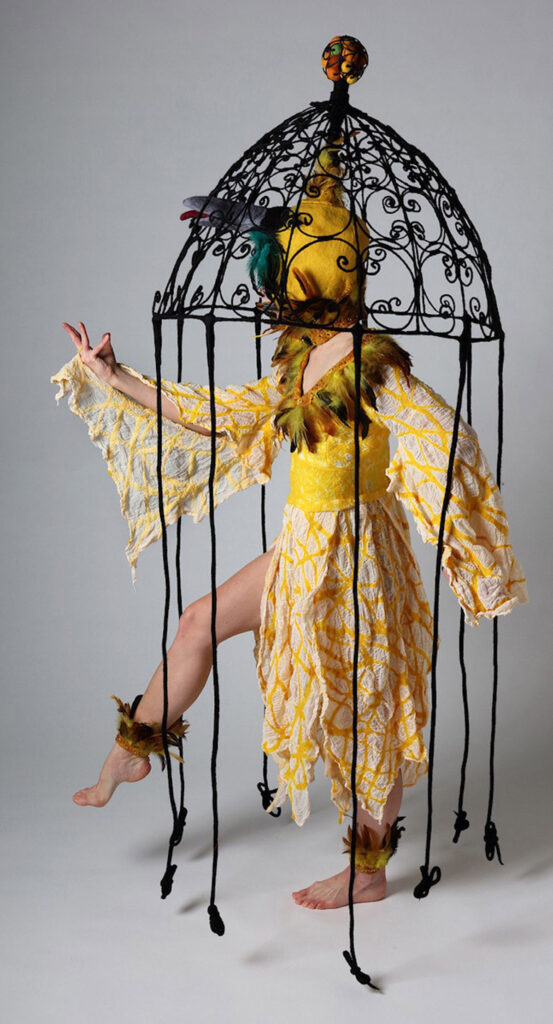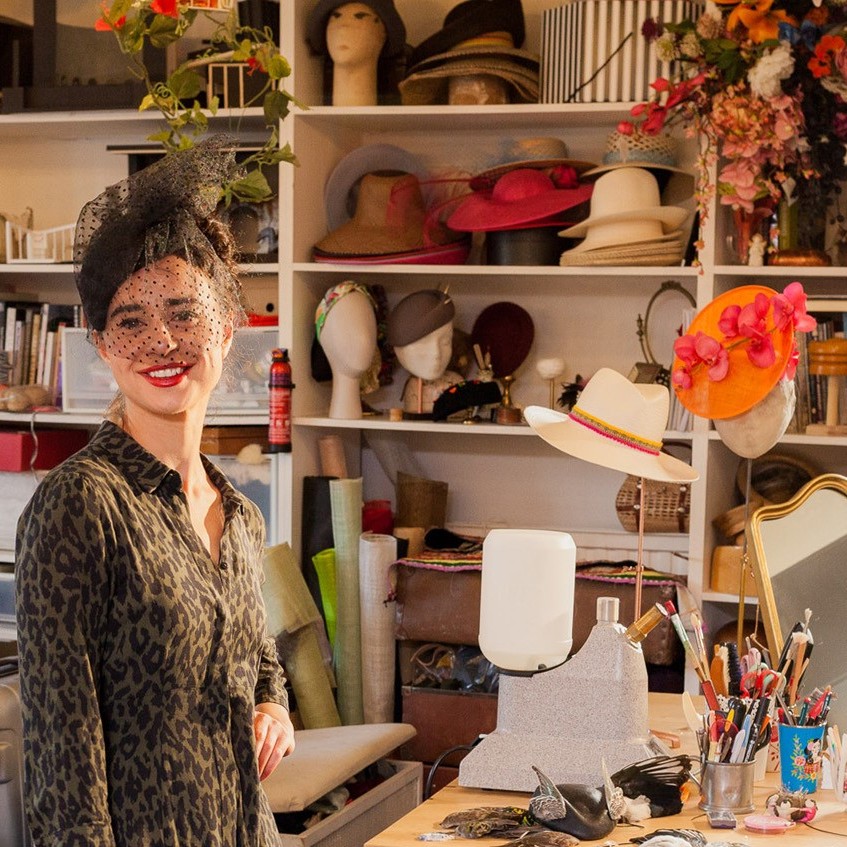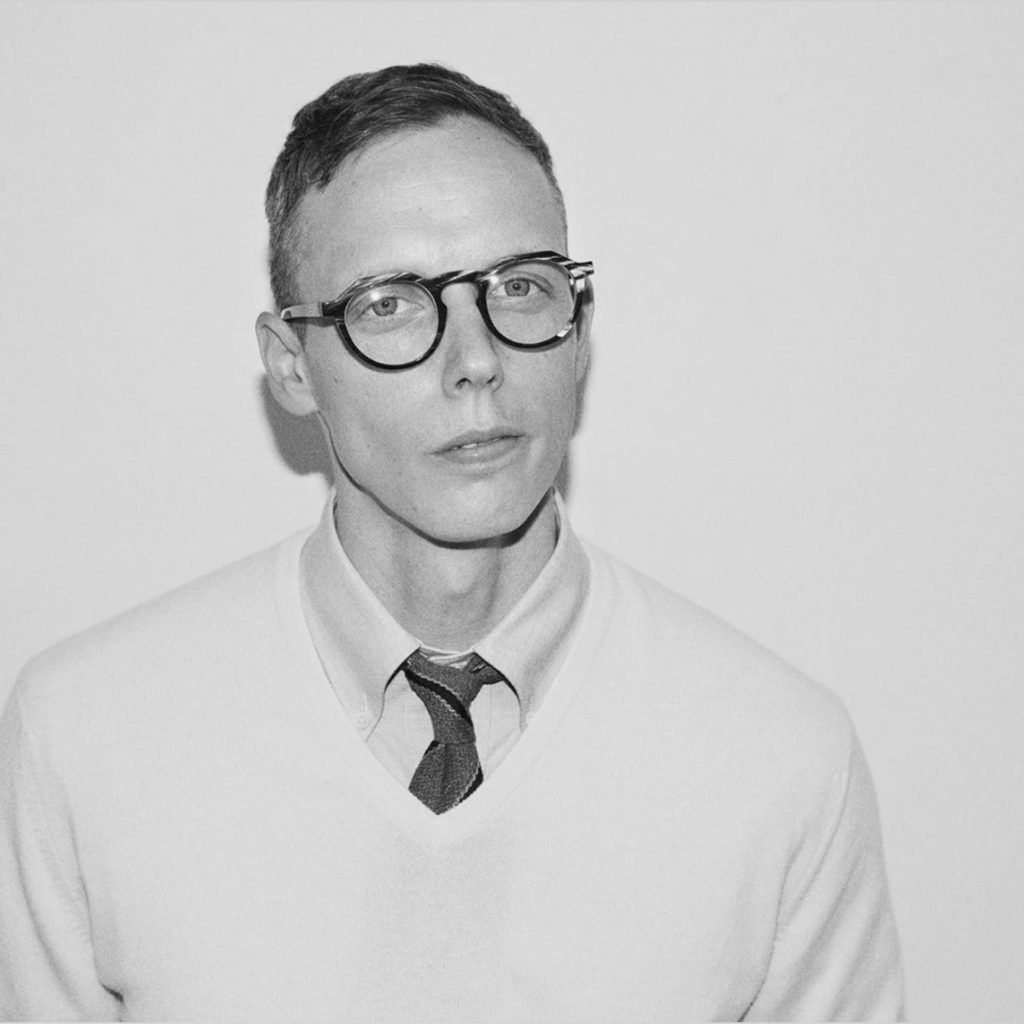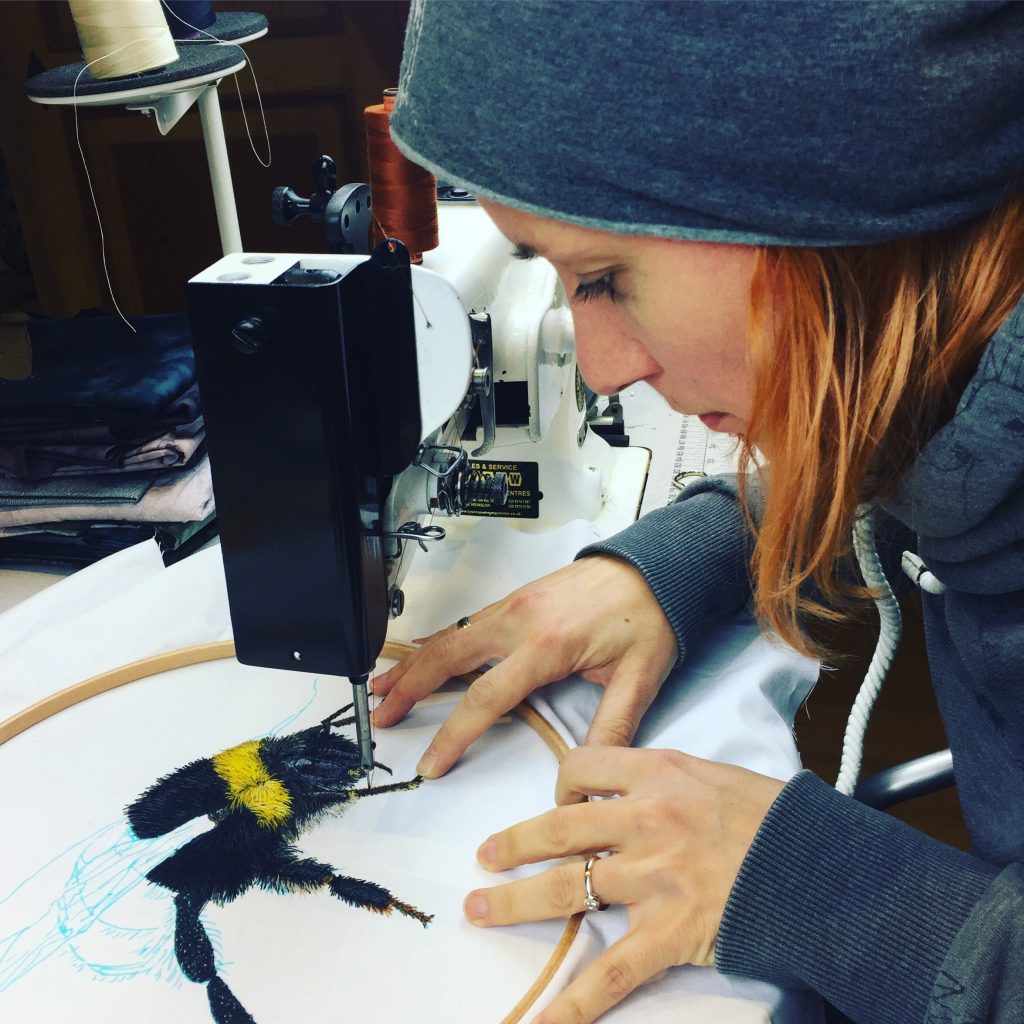Barbara Nell Morejon Textile Artist
You have been working with textiles for over 30 years. When did you narrow it down to felt making?
Felting became my sole focus in 2005 when I moved home to care for my parents and younger sister. Focusing on my felted art was a positive distraction from doctors, medical struggles, and so many changes.
What is it about felt that gives you such freedom?
Every time I work with felt, there is something new, and for me this is what is so exciting. I never feel stifled by predefined rules or approaches to a project. Finding my own path to design and execute a project, is freedom to me. For example, in a millinery class using hat blocks and preformed millinery felt hoods to make hats, the idea hit me, that with my felted art I could make my own felt hoods and they could be any shape or size. That was all it took. My mind went into overdrive as I contemplated how tall, wide, or detailed could I create a hat. This began my first large body of work and won the Ohio Arts Council Individual Excellence Award. The giraffe hat is an example.
You have your work all over the world, how has this happened?
I have been very fortunate to have developed a strong network of artist friends. These artists mentored, critiqued, encouraged, and helped guide me to venues that promoted my art. Also, my art is unusual, not what you might normally think of, when thinking of hats, coats, or animals. For example, the large gorilla’s head with eyes that seem to watch you as you walk by.
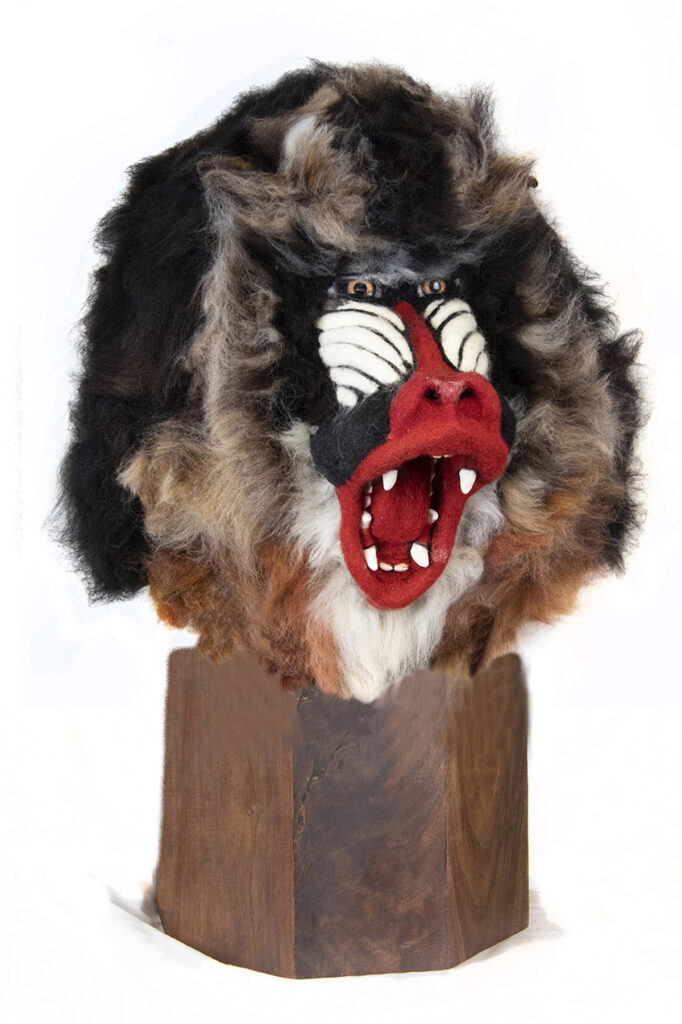
The 3-foot-tall giraffe hat, peeking over the blinds, as the model wearing it, waits for her turn to walk down the runway, invokes chuckles in the audience. My first piece of art to be shown outside of the USA, went to Germany for the International Hat Show, then a Lion hat went to Iceland, and it continued on from there.
One piece is in Australia, with a US connection. Tell us this story.
This was a wonderful collaboration between artist, Marlene Grutter and myself. For three years we had shown wearable art on the runway in Cleveland, Ohio, and taken some of the top prizes. It was suggested that we should enter Australia’s premiere wearable art runway event, Wearable Art Mandurah, we did, and what an adventure! Our art titled, “Captivated”, was the first wearable art entry from the USA. After the runway show, “Captivated” was put on display at Mandurah’s Welcome Centre, and then taken to be viewed at the U.S. Consulate in Perth, Australia. The kindness shown us by the artists in Australia and the U.S. Consulate was unmeasurable.
Show us the two pieces that have a strong relationship to your parents and why?
The giraffe hat was my mother’s all-time favourite. I remember her going to a ladies meeting wearing it, and coming home all smiles with a blue ribbon for the most unusual hat. It makes me smile every time I look at this hat and reminds me how Mom was always there for me.
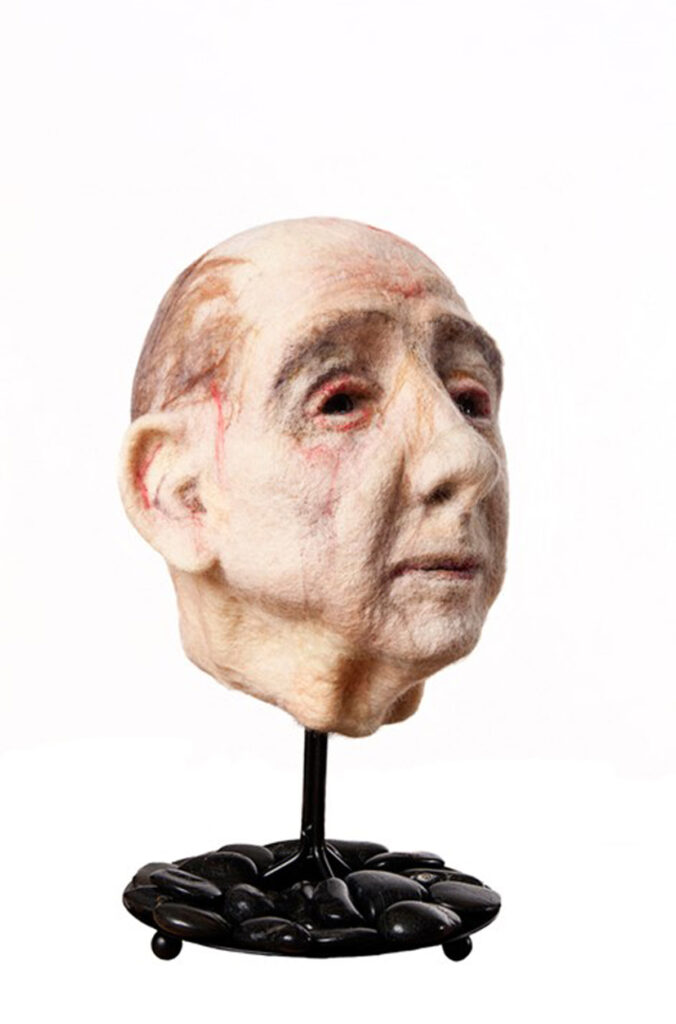
The bust of my dad’s head was my greatest challenge to date. My dad was in the late stages of Parkinson disease and suffering with depression. In an effort to keep him engaged, I suggested to him that I wanted to try something new with my felting, and needed a model. My parents were strong supporters of my art and I was confident he would agree. Beginning the bust was exciting. Never before had I seen this done anywhere. This could be a first. We sat together for hours, and as I measured and felted, we talked. My dad who had never been a talker started sharing stories with me, things he had done throughout his life. My dad has passed, but I will have his stories, and my art forever. In the end, what started out for him, ended up being a treasured gift for me.
You comment, ‘How many artists can say people live inside their art.’ Expand on this.
Learning that Yurts, homes made of felted wool, are still used as dwellings by several nomadic groups in Asia, fascinated me. Just thinking of felting this beautiful textile, and then draping it over the form to make a home, almost seems like magic. A Yurt, art to live in.
Take both pieces, Silverback Gorilla and Baboon, discuss.
The Silverback is 26” tall, 17” wide, and 13” deep. This head is solid wool, not armature, or stuffing. He has glass eyes, black walnut base, and a thin skin of acrylic paint that was applied at the end to create the look and texture of a real gorilla’s skin. When I saw the Silverback at the Columbus Zoo, I saw intelligence and power. These are characteristics I wanted to convey in my Silverback. The large size was created to give the full impact of looking into the eyes of a real gorilla, something most of us will never get the opportunity to do. With both the Silverback and Baboon, needle and wet felted techniques were applied. Both have been on display at Mansfield Art Centre, Ohio, USA.
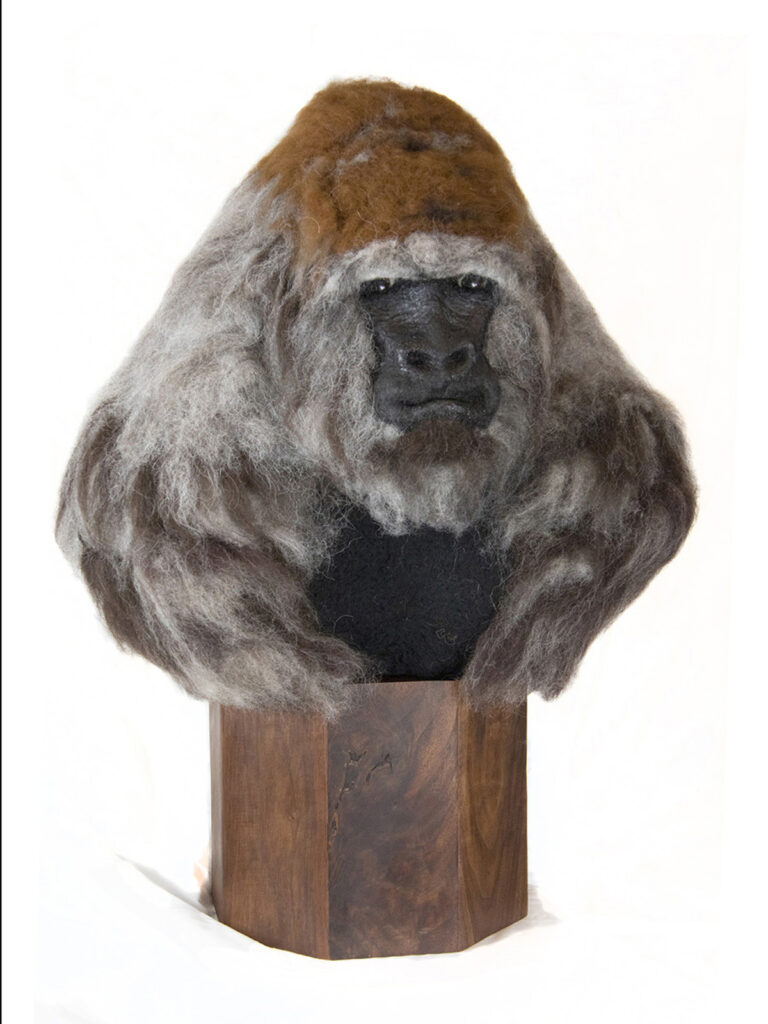
The Baboon is 30” tall, 18” wide, and 18” deep. This head is solid wool, not armature or stuffing. He has glass eyes, and a black walnut base. This Mandrill Baboon was inspired by a documentary I saw. They discussed many characteristics of this primate, but one predominant characteristic was his bad temper. I created this life-size head for the observer to look full in the face of a bad-tempered Baboon, maybe giving the impression he is screaming, “quit destroying my home.”
Why, the interest in animals?
Animals invoke curiosity, contentment, empathy, and positive feelings. With my art, I want people to experience positive emotions. My fascination with animals turned to primates and their places in the world in my teens. Admiring the work of leading primatologists: Jane Goodall, Dain Fossey, and Birute Galdikas; their field work and discoveries have deeply inspired me. While I cannot partake in field work as they have done, this project over the last 2 years, feels as though my art may, in some small way help others to understand these amazing creatures and how important their ecological role is on our planet.
How long does it take to complete a piece like these?
Time is the most difficult part of my art to estimate or calculate. Some aspects of my art are experimental, requiring research and testing. The Silverback Gorilla took a year to finish, but it was not a solid year of work. The Baboon was faster, but still it took 8 months to complete. Some of my smaller pieces, like a basic hat can be done in a day or two. Hats like the Giraffe hat took about a month.
Colour is especially important in you work discuss.
Colour can set the mood without a word, pull your attention from across the room, or give realism to an inanimate object. My coats are made with colours to be seen from the stage, runway, or across the room, and themed to relate to the event that they are shown. This coat was shown at the theatre play of, Romeo and Juliet, Mount Union University, Ohio, USA. For realism when making my animals, a variety of different coloured wools are used. This technic gives highlights and depth to their coats, can show different skin tones and individual features for the body. There is so much power in colour when used well.
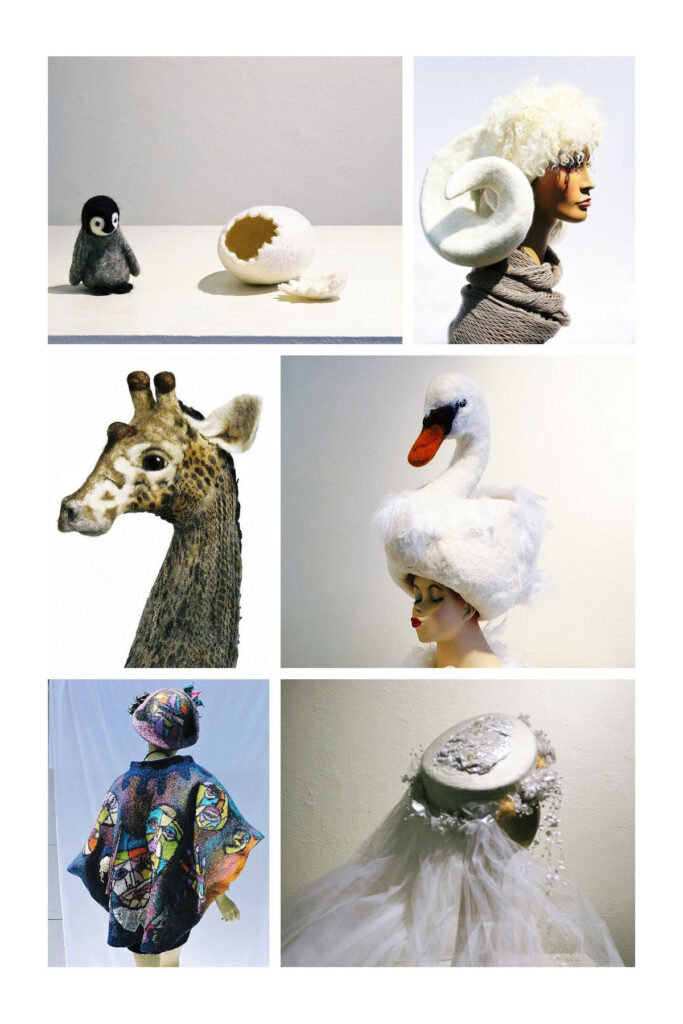
What are you currently working on?
Currently, I am finishing up a body of work on primates. There are 9 individual pieces and the Silverback and Baboon are part of this body of work. After finishing the primates then Christmas projects begin.
Where do you get your inspiration?
Ideas come from many places. The zoo is wonderful to watch different animals for hours. Sometimes it’s something I see walking, browsing in the library, watching TV documentaries about animals, surfing the internet, or even a commission piece. Commission pieces are interesting, because sometimes people ask for items I would never think of. This can offer me a whole new challenge. However, my inspiration is usually something that has caught my eye, and stays in my mind repeating over and over, wanting to be created.
Tell us about your studio and how you keep everything together while creating a piece.
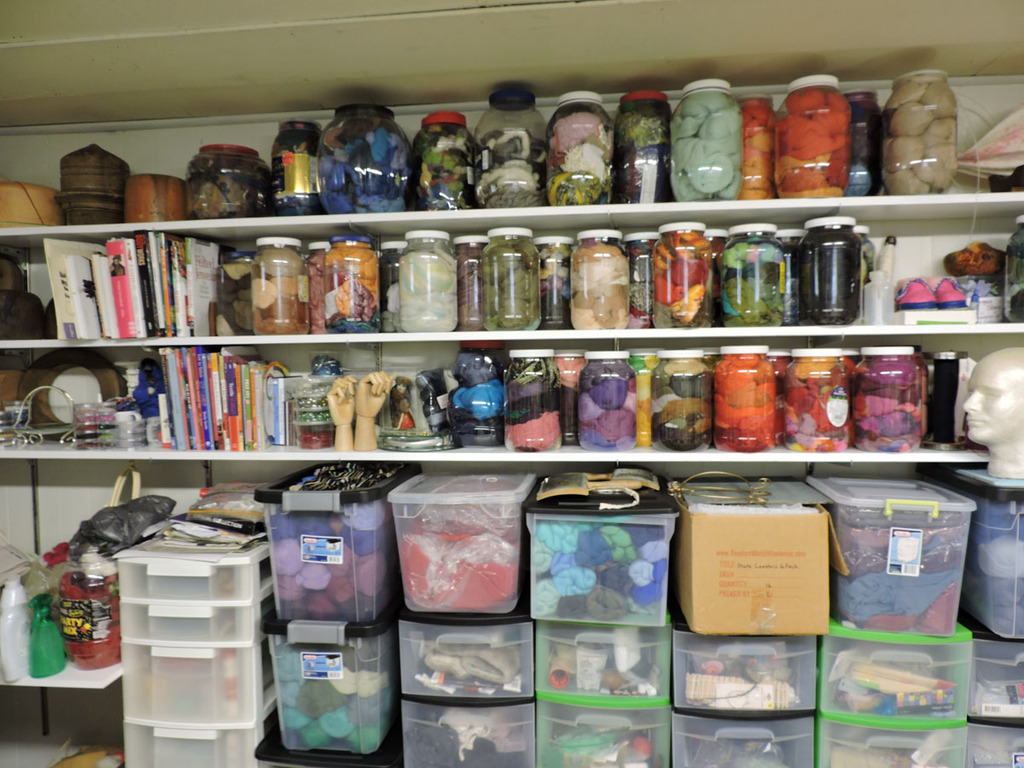
My studio is setup with all wet felting in the downstairs room, with three 6-foot tables, washer/dryer, sink, and shelves lined with clear containers filled with different coloured fibre for easy access. Then for dry or needle felting, the office on the main floor is setup with bookshelves, supplies, small table, desk, and computer. Beginning a project, starts with a clean space and everything put away. From then on until the project is finished, everything related stays out. This is a kind of organized chaos, but it works. A rule of thumb is, one project needs to be finished before moving onto something else. This keeps me from having half-finished projects left over, and can help push me through a project that might not be as entertaining as the next one.
Give us a very brief explanation about the technical process you take.
Felting is a versatile art form that allows me great latitude in approaching a subject. What you see in my art is, traditional wet felting, dry needle felting, and some variations of my own. The animals, coats, and hats are not sewn. Each is felted layer upon layer of wool, in one continual piece with no seams, to create my designs. Other technical processes include: creating wire armatures, designing resists to shape and separate wool for wet felting, and blending the right wools to attain the desired outcome. All of these and more allow me to translate my vision into felted wool.
Contact:
Barbara Nell Morejon
bdnell@gmail.com
Deborah Blakeley, Melbourne, Australia
Interview by Deborah Blakeley, October 2020
Think a colleague or friend could benefit from this interview?
Knowledge is one of the biggest assets in any business. So why not forward this on to your friends and colleagues so they too can start taking advantage of the insightful information the artist has given?
Other artists you may be interested in:


